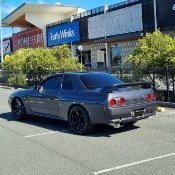Hks Gt2535 Restrictor?
Announcements
-
Similar Content
-
Latest Posts
-
Find out what RPM it was idling at with the IACV unplugged. It's very weird that the rpm didn't change at all, and then it stalled. When it stalls is it nearly like a switch off, like you've turned the engine off? Or is it more stutters and sputters and coughs to death over a few seconds? Or does the RPM just slowly keep going down and down? Have you done a test of trying to start it with the AFM unplugged? Does it still die? If you Follow Josh's advice on using Nistune to check the voltages (which is a perfect method!) if you see anything out of wack voltage wise, THEN get the multimeter out and read the voltage directly at the sensor. If the two vary, then you're now looking for a wiring issue vs a sensor issue. So be aware, what the ECU sees, may not be what the sensor is actually saying too...
-
You very likely need to get it on a dyno and tune it. My assumption is, you've got an RB25DET tune in it, which has a different manifold, different injectors, and different cams as a minimum. What O2 sensor are you running? When you say it runs extremely rich from idle all the way to redline, is this just free revving it you see that?
-
I seem to the be only person that is using a Haltech 2500 on an NA motor, I've installed a Bosch DBW throttle body to the OEM intake manifold and am having problems maintaining AFR even with the wideband o2. It will run extremely rich at idle and up to redline, but under load it will go extremely lean in the 20s and i'm essentially having to rev it over 4k and feather the clutch to get it up to speed. I've read a few other threads of about the butterfly, it seems removing the vacuum to it is supposed to have it remain open, i've noticed no difference under 4k with the vacuum line to it plugged. I'm hoping someone here has had luck using the NA manifold with Haltech, and if they happen to have a tune for it.





Recommended Posts
Create an account or sign in to comment
You need to be a member in order to leave a comment
Create an account
Sign up for a new account in our community. It's easy!
Register a new accountSign in
Already have an account? Sign in here.
Sign In Now